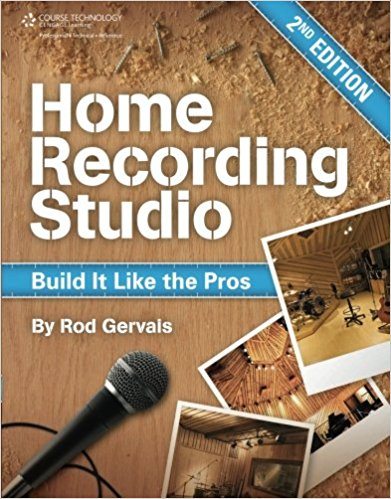Home Recording Studio, Build It Like the Pros by Rod Gervais
The reason that I have decided to write review of this book is that I like the book.
More...
The author Rod Gervais knows what he is talking about. He covers in detail all aspects of building a home recording studio.
Chapter 1 – examples of home recording studios
The author describes several studios that look more like professional studios than home recording studios but are interesting illustrations. He also stresses that successfully building a home recording studio means one cannot take shortcuts. Sometimes, a minor deviation from building instructions greatly affects the final soundproofing result. He also covers the pros and cons of doing it yourself or hiring a contractor for construction.
Chapter 2 – acoustic concepts
The author explains succinctly key acoustical concepts that a studio builder must know. It covers frequency, wavelength, room modes, flutter echo, comb filtering, stereo imaging, and room sizes.
Chapter 3 – basic sound isolation technique for home recording studio
The author discusses basic sound isolation techniques and concepts and mentions mistakes people sometimes make.
Chapter 4 - construction details of the home recording studio
This chapter explains how to build a floating concrete slab floor and why a wood deck is usually inadequate. The author then describes many details of wall, floor, and ceiling assemblies.
Chapter 5 – soundproof doors and windows
The author discusses soundproof windows and doors and provides detailed instructions on building them. He provides instructions on how to build a very strongly soundproofed door.
Chapter 6 – electrical design for home recording studio
This chapter covers electrical and electronic considerations important for properly functioning the home recording studio.
Chapter 7 – ventilation, heating, and cooling
The author describes relevant HVAC (heating, ventilation, and air-conditioning) design concepts in detail. This chapter has far too many technical details for a do-it-yourself handyman to implement without an HVAC contractor successfully. On the other hand, HVAC contractors usually do not pay enough attention to noise issues so they will need supervision in this area.
In conclusion, his book's second and third chapters provide an interesting overview of building acoustics. The bulk of this book covers detailed instructions for building required soundproof assemblies. Chapters dealing with electrical issues and HVAC are too detailed for the average do-it-yourself handyman. They are intended for knowledgeable and dedicated home recording studio builders.
Chapters that deal with sound isolation issues have more general applications for other noise-critical situations (home theater rooms, music practice rooms, etc.). Therefore this book is useful and educational for anyone interested in soundproofing construction.
I welcome your feedback or written questions. Please use the form below.
